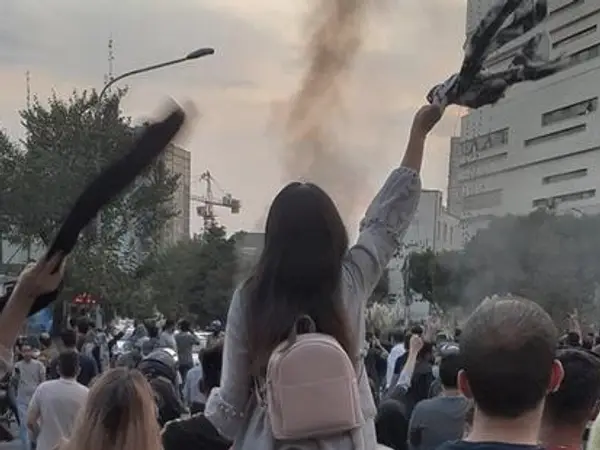After five days of mysterious silence over the protests in Iran, the Revolutionary Guard (IRGC) reacted on Thursday by accusing and threatening the protesters.
At the same time, one hardliner clerics at the Majles said two days of rallies for the death of hijab victim Mahsa Amini is enough, and another hardliner cleric called Mahsa's murder a "trivial matter".
In an initial statement on Thursday, September 22, the IRGC expressed "appreciation for the police force's efforts during recent days." This was a coy expression of support for murdering Mahsa Amini and attacking, killing and wounding those who took part in the protests that followed. It was also an indication of the IRGC's open support for the violent crackdown of the rallies in over 80 Iranian cities across the 31 Iranian provinces.
A more extensive defiant statement issued on the same date praised the police force as the protector of Iranian's lives, assets and families. This comes while numerous footages posted on social media show the police force beating women and young adults among protesters and shooting at them often at point blank.
The only difference in the police's behavior in comparison to previous rounds of protests since 2009 is that for the first time, young Iranian men and women have started to fight back. Videos show them pushing back heavily armed policemen and their plainclothes agents. Particularly in cities such as Rasht, Qazvin and Hamadan, the police force is seen fleeing from empty-handed young men and women who fearlessly stand against them and the Basij militia.
The IRGC levelled the run-off-the mill accusation of "sedition" against the protesters and repeated hardliner Iranian officials and clerics who claim the protests are "undermining the government's strategic achievements such as joining the Shanghai Cooperation Organization and President Ebrahim Raisi's inspiring visit to New York." Raisi took part in the United Nations General Assembly and delivered a speech in which he claimed his government was an advocate of justice, while exactly at the same time, government forces were beating and arresting protesters.
The IRGC statement further added insult to injury and likened Iranian protesters to the Islamic State warriors. This comes while it was the Iranian police and Basij militia who copied ISIS tactics by sending troops onboard ambulances to suppress the protests. Meanwhile, the hijab police's behavior against women is exactly copied from the behavior ISIS was showing in confrontation with women in Syria and Iraq.
The statement characterized the protests to the murder of Mahsa Amini as "an organized conspiracy hatched by the enemies of the Islamic Republic against the country's security." Meanwhile, in several posts on its Telegram channel, the IRGC claimed that protesters have killed several policemen and Basij militia members in various cities. Based on IRGC's behavior in nationwide protests since 2017, this could be part of the preparation for wider and more violent crackdown on the protests.
In another Telegram post, IRGC's Telegram channel revealed that a pro-government rally has been planned in Tehran for Friday, after prayers, "to denounce the abnormal moves and insults to the holy Koran, setting fire to mosques and disrespectful behavior toward women by a limited number of mercenaries." This is the same jargon the regime has been using against protesters since 2009.
However, what is interesting in this statement, is that the pro-government demonstrators are going to rally from Tehran University, the venue of the Friday Prayers, to the Enghelab Square, less than half a mile away. This could indicate that the organizers of the pro-government rally are aware of the small number of their supporters who cannot fill a larger space.
At the same time, a lawmaker from Esfahan, Hossein Mirzaei said that the murdering of Mahsa Amini is "a trivial matter" and the nation should be instead preoccupied with more important matters such as Arbaeen mourning and Shanghai pact, while another lawmaker, Ahad Azadikhah, said "two days of mourning for Mahsa was enough and those who took to the streets after that are the leaders of belligerent groups."
